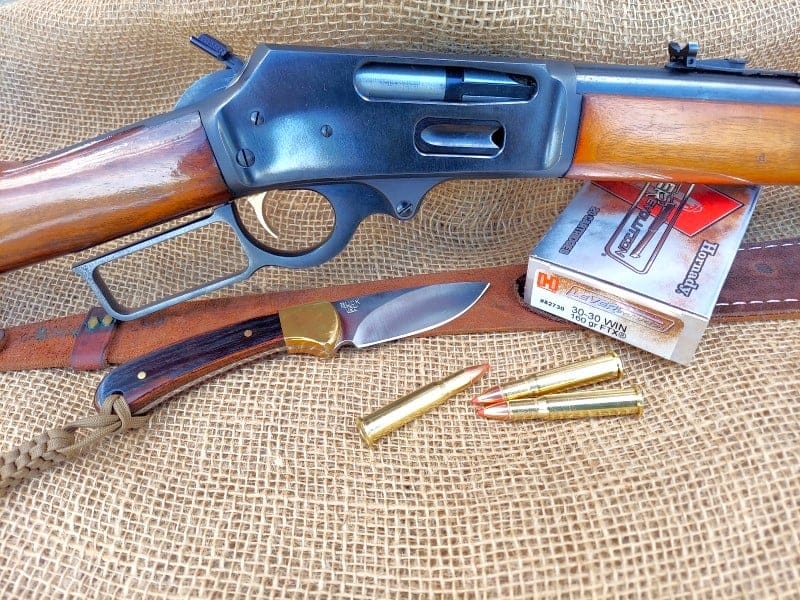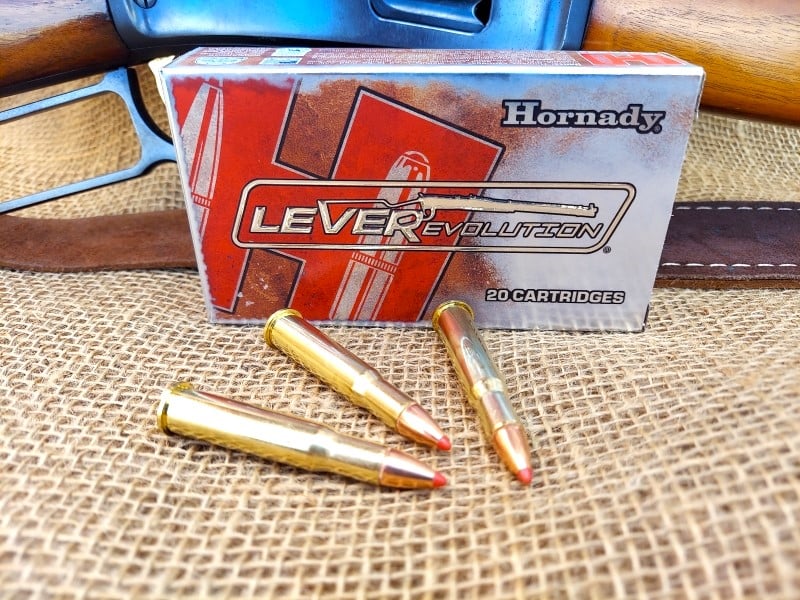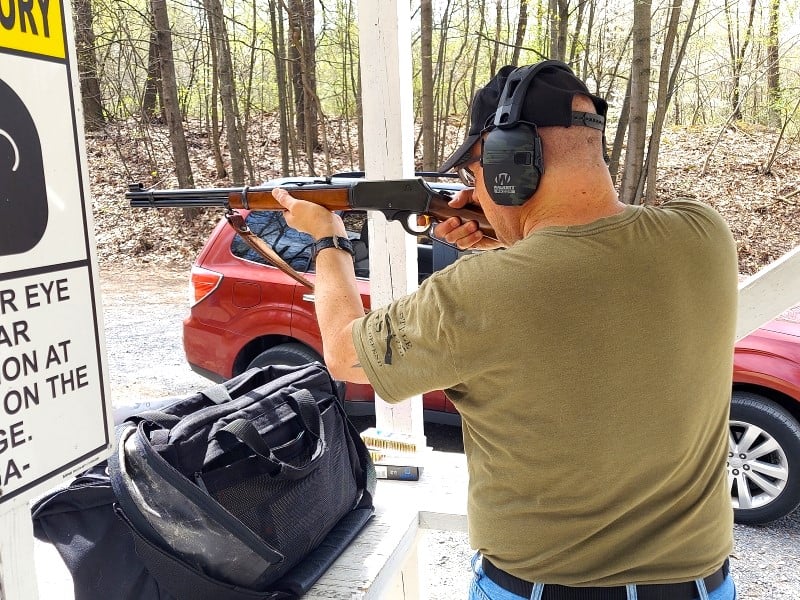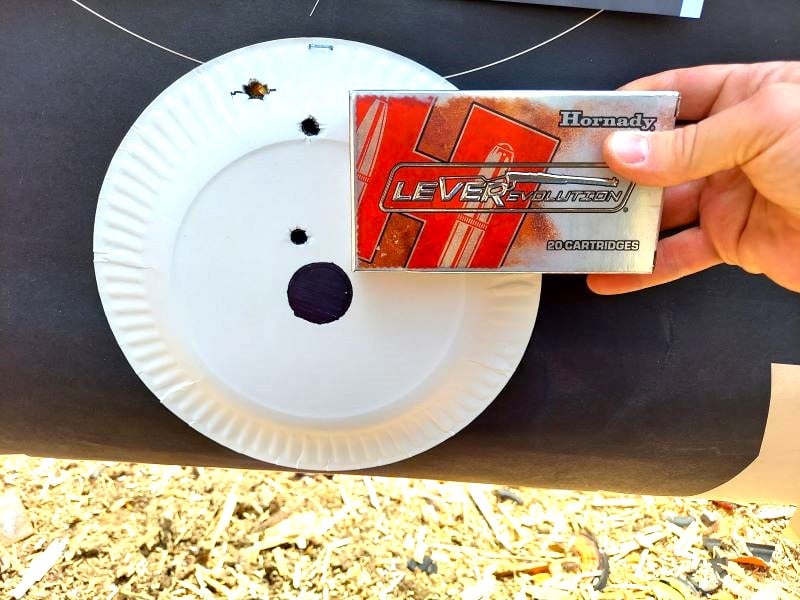How does Hornady’s LeverEvolution .30-30 Winchester round stack up against the rest of the ammunition on the market? Is it really superior to anything else out there, or is that just market hype?
You want answers? We’ve got them!
A Little History
Back in 1895, Winchester introduced the .30-30 cartridge, which was one of the first rounds to use smokeless powder. The first rifle it was chambered in was the Winchester Model 94, designed by none other than John Moses Browning. Back then, its nearly 2,000 feet per second speed with a 160-grain bullet was considered to be very fast for its time.
Since that time, many other cartridges have come and gone. And yet, the venerable .30-30 continues to endure. When we consider how many rounds have slipped into oblivion since 1895, it’s impressive that the .30-30 is still slugging it out. That speaks volumes as to its effectiveness. While it’s true that it’s no longer the most popular hunting round, sales are still solid. As this is written, the .30-30 is 128 years old.
The performance of the .30-30 is not breathtaking. It won’t shoot flat out to 500 yards, and trying to use it at such a range would be laughable. However, within a couple of hundred yards, it will put meat on the table without question. Its main claim to fame has been as a deer rifle, but it will harvest other game as well. At close range, black bear and other game are reasonable prospects.
Why is .30-30 so popular?
One of the reasons the cartridge maintains its popularity is probably loyalty. In my neck of the woods (Eastern PA), the .30-30 has a cult following. Great grandfathers passed the tradition of hunting down through the generations, and many of them used the .30-30. Those traditions just stuck, and where I come from, people tend to stick with what works. There’s a definite “If It’s Not Broken, Don’t Fix It” viewpoint at work here.

Where I come from, as many people have .30-30 lever actions as do not. They’re wildly popular, and practically standard-issue for beginning hunters. Years, ago, the lever action could be purchased for a couple of hundred dollars easily. These days, that’s changed because they are now in extremely high demand. And that high demand tells us that people might just be re-discovering their popularity.
.30-30 Performance
For use in thick woodlands, one would be hard-pressed to come up with a better deer cartridge. Shots rarely reach 100 yards, and are frequently well under that. These conditions fall perfectly into the .30-30’s parameters, it really shines within 100 yards. It can even be stretched to 200 yards.
The truth is, within its realistic range, the .30-30 will kill game as dead as any other cartridge you can care to name, including the .30-06, .270, and all the other favorites.
If there is any criticism, it is that the .30-30’s trajectory is not very flat at all. If you’re after a flat-shooting varmint rifle, this one ain’t it! That’s one of the reasons why its range is somewhat limited. There are other calibers that are far flatter-shooting, that will reach out to those longer ranges.
Hornady took notice of the curving trajectory of the .30-30 and did something about it with their LeverEvolution line of bullets.

The plunging trajectory of the .30-30 is largely due to its blunt-nosed design and moderate velocity. Because of the tubular magazine design of most lever actions, pointed bullets can’t be used. The recoil of the rifle could cause the point of one bullet to hit the primer of the bullet in front of it in the magazine, acting as a firing pin and setting off the entire magazine of rounds.
At least, that’s what we’ve always heard. Be that as it may, I have never heard of one single, documented incident of pointed bullets detonating in a tubular magazine. Whether or not it’s an actual danger, I cannot tell you. However, the industry gives it due diligence by not loading pointed ammunition into tubular magazines.
Until, that is, Hornady came along and did it!
How is Hornady LeverEvolution .30-30 different from other loads?
The .30-30 Hornady LeverEvolution ammunition has pointed bullets with flexible, polymer tips. The polymer tip of the bullet gains a higher ballistic coefficient, which raises velocity and helps attain a flatter trajectory. Also, being softer than lead or copper, these tips won’t set off any primers in the magazine. It’s a stroke of genius, really.

How much extra velocity does the pointed tip give? Hornady states that it’s up to 250 feet per second. Now that’s pretty significant. Even 100 feet per second would be noteworthy, but 250? That’s something to talk about.
To be fair, today’s propellants are far and above what the original powders gave to the .30-30 back in 1895. So even without the pointed bullets, we were bound to see increases in velocities over the years, just based on propellant advancement.
Hornady advises that the LeverEvolution delivers 40% more energy than normal flat-point bullets. This would be due to their increased velocity.
Trajectory and velocity figures can be gleaned from a chart on the Hornady website. With a 200-yard zero, the 160-grain Hornady LeverEvolution round is three inches high at 100 yards. At 300 yards, it is -12.1 inches low. So at 300 yards, if we were to hold slightly high on our target, we could expect to hit the vital zone of a deer at that range. That extends the range of the .30-30 appreciably compared to flat-point hunting ammo.
As far as velocity is concerned, at the muzzle, this round is listed at 2,400 feet per second from a 24-inch barrel. At 100 yards, it’s still going 2,150 feet per second. My Marlin 336 has a 20-inch barrel, so the velocity will be a little slower, but shouldn’t suffer too much.
Hornady rates this LeverEvolution round to be useful on Medium (50-300 pounds) and Large game (300-1500 pounds). It would seem to cover everything from small deer or hogs to Elk and some bear. Certainly, it would be effective against bipedal predators as well.
At the Range
The Marlin 336 that I used was manufactured in 1973. The buckhorn sights are basically zeroed for 100 yards, although these days, my eyes prefer aperture sights as opposed to buckhorns.

With flat-pointed bullets, the rifle normally shoots to point of aim at 100 yards. I tested the LeverEvolution rounds at 50 yards because of time and space constraints. And, to be honest, 50 yards for a .30-30 is a realistic hunting distance for many of us who hunt in the close woods.

At 50 yards, the 160-grain Hornady round impacted a few inches high, which tells me that they’d also hit slightly high at farther distances. Which, given their higher velocity and better ballistic coefficient, would make sense. They’re more efficient and will not drop as fast as less efficient projectiles.
Given the fact that I was using iron sights and no scope, I was getting decent groups with the rifle and ammo combination. Because I’d never fired these type of rounds from this rifle before, it took me a few shots to get used to them.
Parting Shots — Is Hornady LeverEvolution any good?
Hornady’s LeverEvolution cartridges do give us extra velocity as well as a flatter trajectory due to their more aerodynamic shape. That will extend the distance that we can reasonably expect to use the .30-30 at in the hunting field.
To that end, Hornady has successfully done what they set out to do, which is to extend the range of the .30-30 in the hunting field. I would say they’ve added about a hundred yards to the cartridge’s capabilities, which is significant. They’ve turned a 200-yard rifle into a 300-yard rifle.
Of course, if I were going to entertain those ranges, I’d add a low-power scope to my rife so I could not only identify my targets but also get the most accuracy possible from the rifle and cartridge combination.
Beyond merely offering a superior trajectory, that polymer tip really expands when it hits game, with the bullet mushrooming like the best hollowpoints on the market.
Is this one a winner? You betcha!! Hornady delivered on this one!


